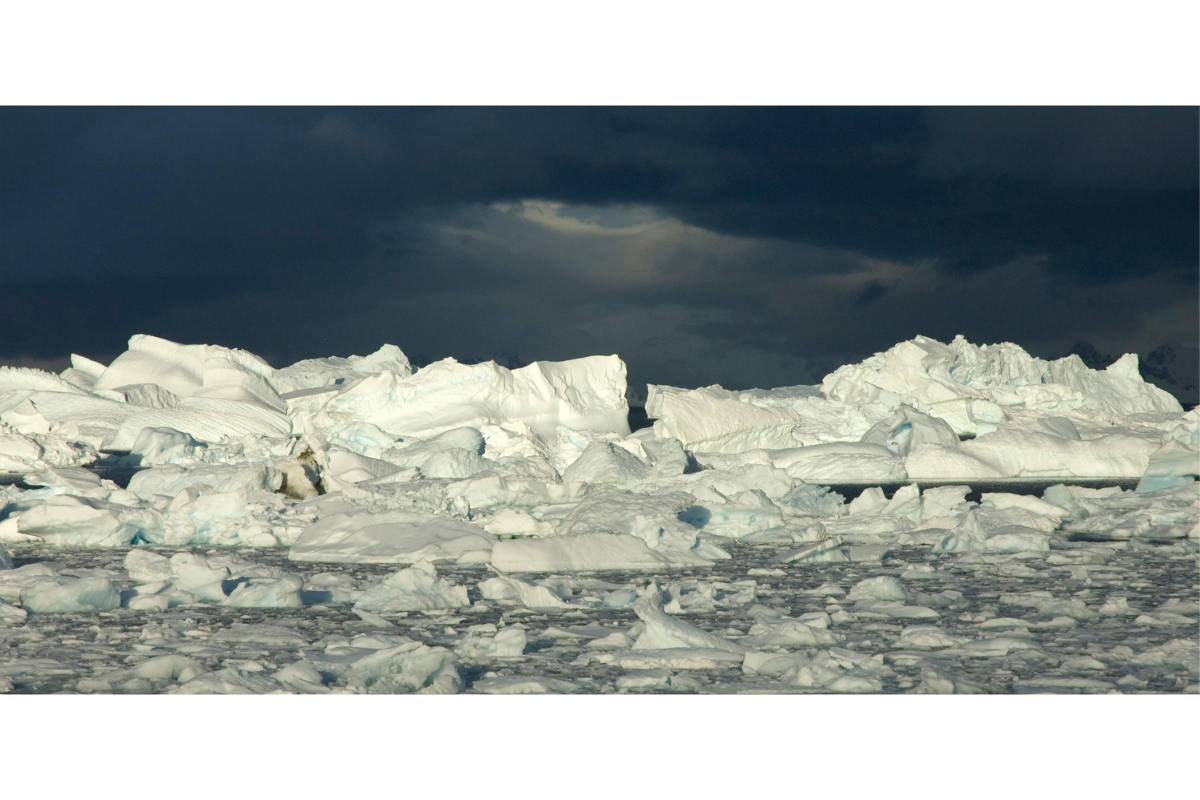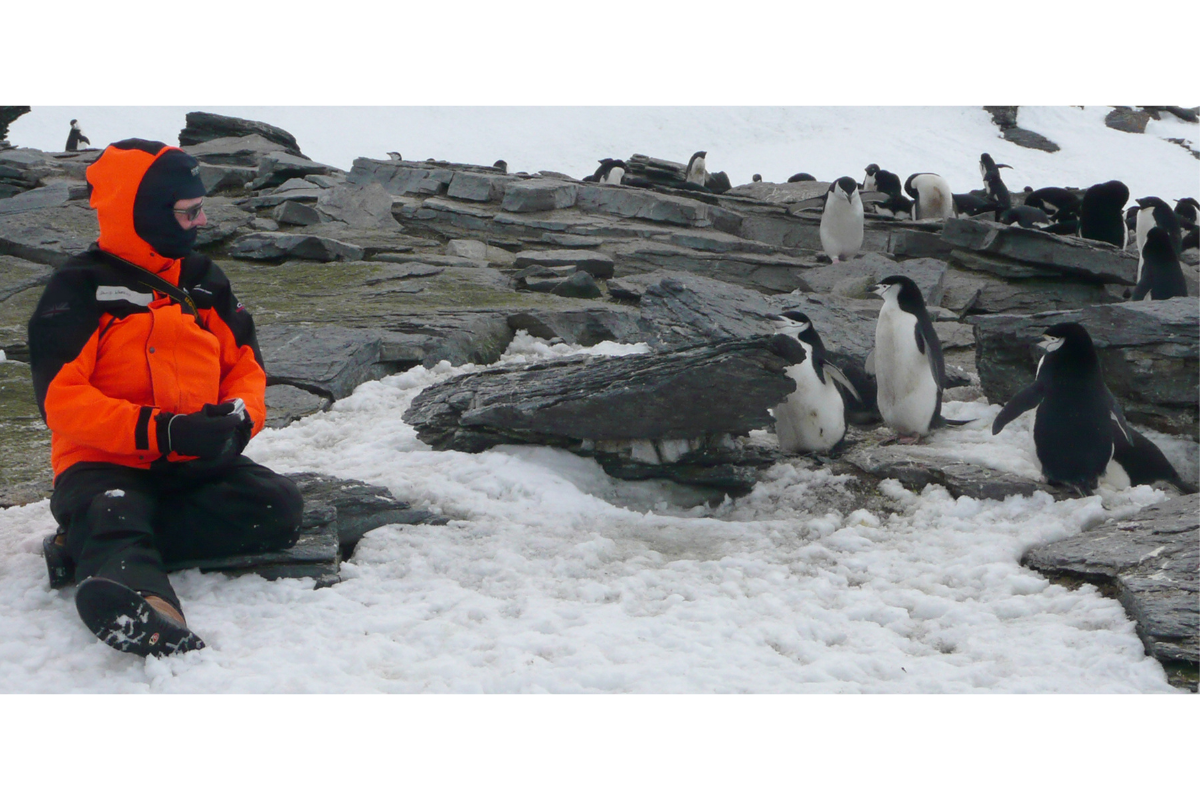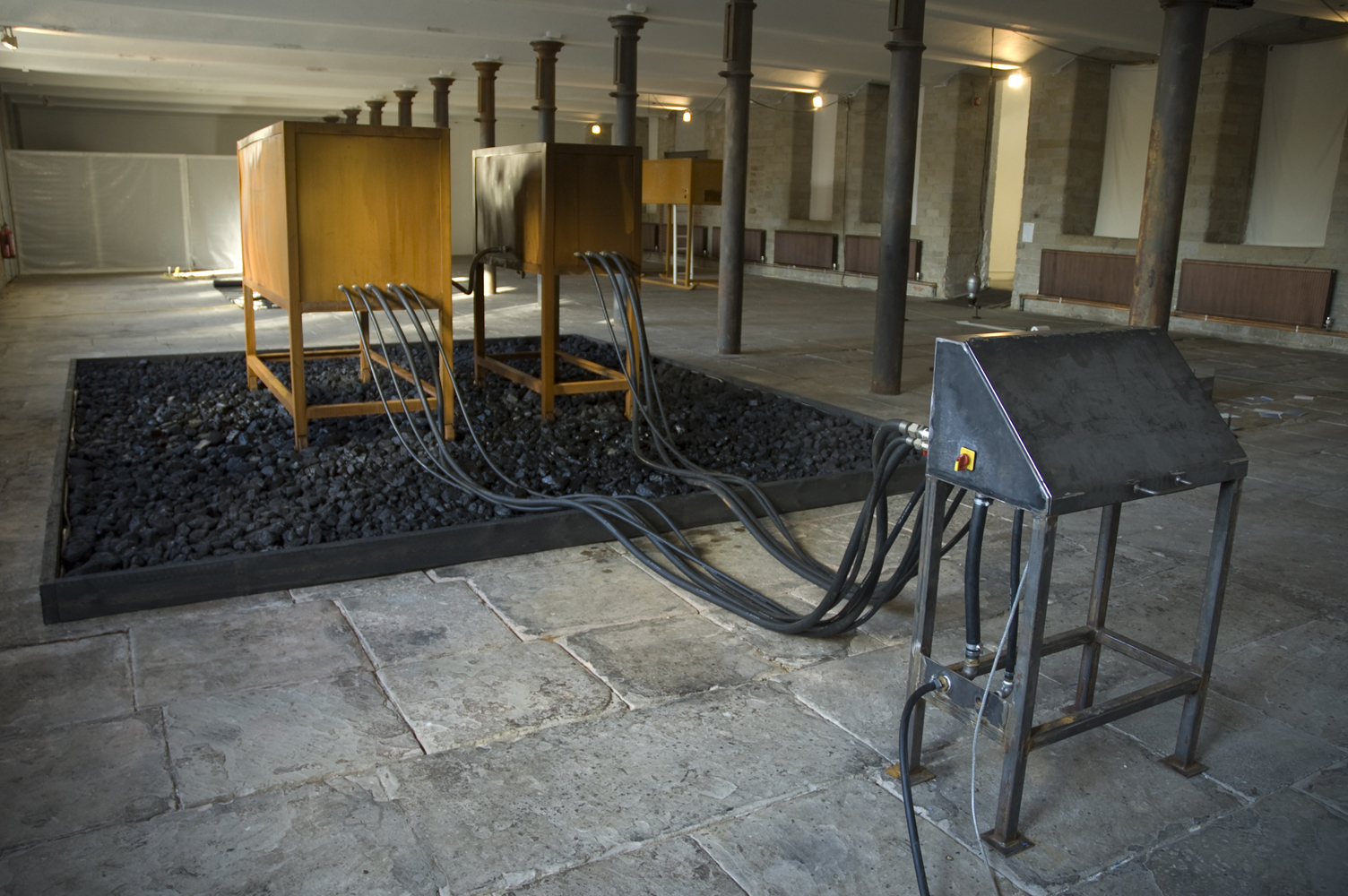From the Ends of the Earth
As IOU begins the making of a new touring show The Wheel, writer and artist Fiona Glen revisits the work that set the whole idea in motion fifteen years ago.
Preface
Half Moon is an exhibition and installation made in response to my three-month residency in Antarctica. It consisted of a series of kinetic sculptures, large format photographs and video panoramas, and attempted to evoke the atmosphere and sensation of being in that most remote area of the world. In Antarctica, the improbability of life on earth seems very stark and even more miraculous than it normally does. Standing on the end of the Earth’s spinning axis near the magnetic pole, the Sun skipping along the horizon during the Antarctic summer, seemed like I’d dropped inside the engine room of the Universe.
Following on from Half Moon, from 2010-2017, was a series of installations also inspired by my time in Antarctica, which included Speaking Tubes, Vortex and Volatile Light. The Wheel, is the last in the series inspired by the remoteness and our place in the world.
The Wheel is a mechanical sculpture that slowly promenades through the streets; a giant gleaming aluminium wheel with a minute figure walking along inside the rim. I liked the idea of the tiny figure setting off on a long expedition, re-scaling our perception of distance and time as we watch it. Our normal perception of the world around us is bumped into a different focus.

From the Ends of the Earth by Fiona Glen
On the landing of my parents’ house is a painting of five penguins, huddled shoulder-to-shoulder for warmth.
In a snowstorm of white daubs, they point their beaks directly skywards, some dribbling a little orange onto their upturned chins. Made when I was six and we were studying the North and South Poles, the painting was published in my school’s annual journal as Singing Penguins, a title ascribed by my teacher. At the time, I was unimpressed with this misunderstanding of my artistic intent. Penguins don’t sing, they’re watching a plane! Read by adult eyes, the penguins do seem to form a fervent, choir-like cluster, gazing heavenwards in awe and praise – but I think this reflects, more than anything, our own reverence at the idea of the wild and blizzard-swept skies above a vast Antarctic.

Inspired by the tale (since disproven) that penguins topple when watching aeroplanes fly overhead, my childhood painting now reminds me of the myth-making power of a continent which was uninhabited and uncharted by humans until so recently. Despite being fiction, the penguin-plane story speaks of worlds crossing – of the possibilities between creatures meeting for the first time, becoming strange in each other’s gaze.
Embodying the weirdness and wonder of animacy through sculptures is IOU’s exhibition Half Moon (2010).

A solo exhibition of sculpture, video and large format panoramic photographs, it was created in response to Artistic Director David Wheeler’s three-month long residency in the Antarctic.
Thick tubes snake across wet gravel, hissing under building pressure, and lock into the back of two rusted troughs brimming with water. A submarine-like tank rises, nose-first, to the surface, followed quickly by its smaller neighbour in the next trough. Bobbing on the surface, they spray firm blasts of air from their blowholes before descending with a rude hubbling. Crafted from scrap compressed air tanks and rusting sheet steel, the kinetic sculpture Vessel 1&2 retains the artist and theatre-maker’s sense of liveliness and play. In the unlikeliness of metal taking on such lifelike (or whale-like) spurts, the mechanical sculpture attracts the same wonder that an organism erupting into view does as it moves in fascinatingly distinctive ways.
The thing we call ‘nature’ is not reserved for gentle watercolours and restorative walks. Life on earth can be majestic, mundane, vicious – and, often, funny. Vessel 1&2 expresses a noisy, beautiful, animal humour.
Vessel 1 & 2 is one of six kinetic sculptures that make up Half Moon.
As seen in its documentation film, the sculpture is accompanied by Antarctic Travelogue, a collection of photographs and films Wheeler made while on his residency with the British Antarctic Survey. Cross-cut by the cries of seabirds, Half Moon appears like a strange ecosystem – Antarctica translated by Wheeler into unexpected forms that follow their own interconnected logic.
Another sculpture within Half Moon, called Visible Light, is a sledge-like structure on stilts, inviting visitors to poke their heads into a modified freezer, discovering a sliver of sky inside a chest of crystalline ice. Nearby, part of another work is mounted in the ceiling: the inkjet printer of Gravity chugs out images of clouds and blue sky, dropping them towards the floor where a lidless water tank sits. A form of changing weather, governed by air flows and chance, each photographic precipitation risks dissolving in this open pool. Every jitter of the printer jolts two tiny cymbals suspended from the machine; their light, irregular ringing feels mildly mystical in this space of seemingly living objects. Among machines and things, Wheeler crafts a sense of mysterious animacy and precarity. I imagine viewers felt intriguingly out of place – as if in an unfamiliar landscape, illegible and alive with its own rules.
Meditating on water in its various states, Half Moon communicates the interplay between Antarctica’s atmosphere, ocean, and frozen lands.
Our planet is a watery one, currently facing rapid changes to the ice frozen at its poles, the temperatures flowing in its seas, and the rainfalls, storms and sun shields held in its atmospheric vapours. Half Moon’s restless sculptures capture the mutability of this environment, pushing against the easy trap of seeing Antarctica as eternal and unspoilt. In this dangerous myth – more easily believed from afar – the need to protect an ecosystem like no other is downplayed.

In a climate emergency where the Arctic is rapidly shrinking, we are used to seeing images of melting ice caps and skinny polar bears.
Seemingly a world apart from the frenzy of industrialised human cultures, Antarctica is profoundly changed by their effects. The dissolution of Antarctic ice shelves – unlike Arctic sea ice – could raise global sea levels catastrophically. In December 2021, glacierologists found fissures developing above and below the Thwaites glacier; the collapse into the sea of this giant ‘doomsday glacier’, weighing thousands of billions of tonnes, could raise sea levels by half a metre. Still, this devastating possibility seems, quite literally, a million miles from our everyday lives.
Similar to how artist Olafur Eliasson later installed his Arctic icebergs on London streets, and in front of Tate Modern, for Ice Watch (2018) – allowing people to see, touch, hear, and even taste them melting – IOU’s Half Moon seems to aim to render the dynamism of the Antarctic more tangible. One of the show’s sculptures, Slack Water, is composed of a cement mixer that sloshes water and gravel with a textural sound like the tides that gnaw at thawing Antarctic beaches. It becomes a sensory glimpse of a place so remote from our everyday experiences that Wheeler says it “may as well be the moon.”
Offered the rare chance to physically witness Antarctica, Wheeler describes how he became “intensely aware of the beauty and fragility of the whole planet… [and of] how brief the period of time has been during which the particular arrangement of forces and phenomena has allowed life to evolve.” Indeed, not so long ago, in planetary terms, the Antarctic land mass was at the Equator and covered in tropical forest. Considering such places through sensory experiences invites us to consider deep time, remembering the slow and ceaseless drift of our Earth’s surface.
I recently allowed myself to get lost in Google Maps and the images it pins to Antarctic shores and islands. Here, peaks of snow blush bright pink in a polar dusk, isolated on the open ocean. Dotted on gritty grey beaches are boulders doubled in size, entirely shrouded with air-streaked ice. Wandering through pop science articles, I learned that Emperor penguins cannot cope with temperatures above twenty degrees Celsius, and that climate change spurs algae to turn polar snow red, sweet-scented, and melting.
This is a time when people in industrialised and extractive nations urgently need to see the world from other perspectives. It is my hope that responsibility can be cultivated by remembering that many beings make up the world, and that we are not its entitled centre. Just as science fiction can kindle new awareness of our present reality, art can awaken a keener sense of our surroundings and how we affect them.
Someone recently told me that travelling has been found to make people kinder: more compassionate, presumably humbled in the face of the unknown. I can only imagine the modesty that Wheeler and his fellow resident artists felt in the face of the Antarctic.

By going to the ends of the earth, perhaps people more easily sense that there is nowhere truly isolated or empty on our planet. As novelist and environmental activist Wendell Berry writes, “there are no unsacred places.” Each landscape is a home to beings like, or unlike, ourselves. Each environment is connected to the rest in a weave of moving air, earth, water, and living things, whether we can sense them or not.
‘Oceanic feeling’ has been used to describe an arguably spiritual sense of eternity and being at one with the universe. Beyond a sense of timeless completeness, perhaps ‘polar feeling’ could indicate the more unsettling side of this – the awesome and profoundly precarious sensation that can come with an awareness of our intricate and contingent interconnection. Polar feeling is becoming aware of the fragility of our living balance, and sensing our responsibility within it.
By cultivating polar feeling, artists like Wheeler invite us into the realisation that everywhere is affected by everything else, resonating with the rest of our delicate planet.
